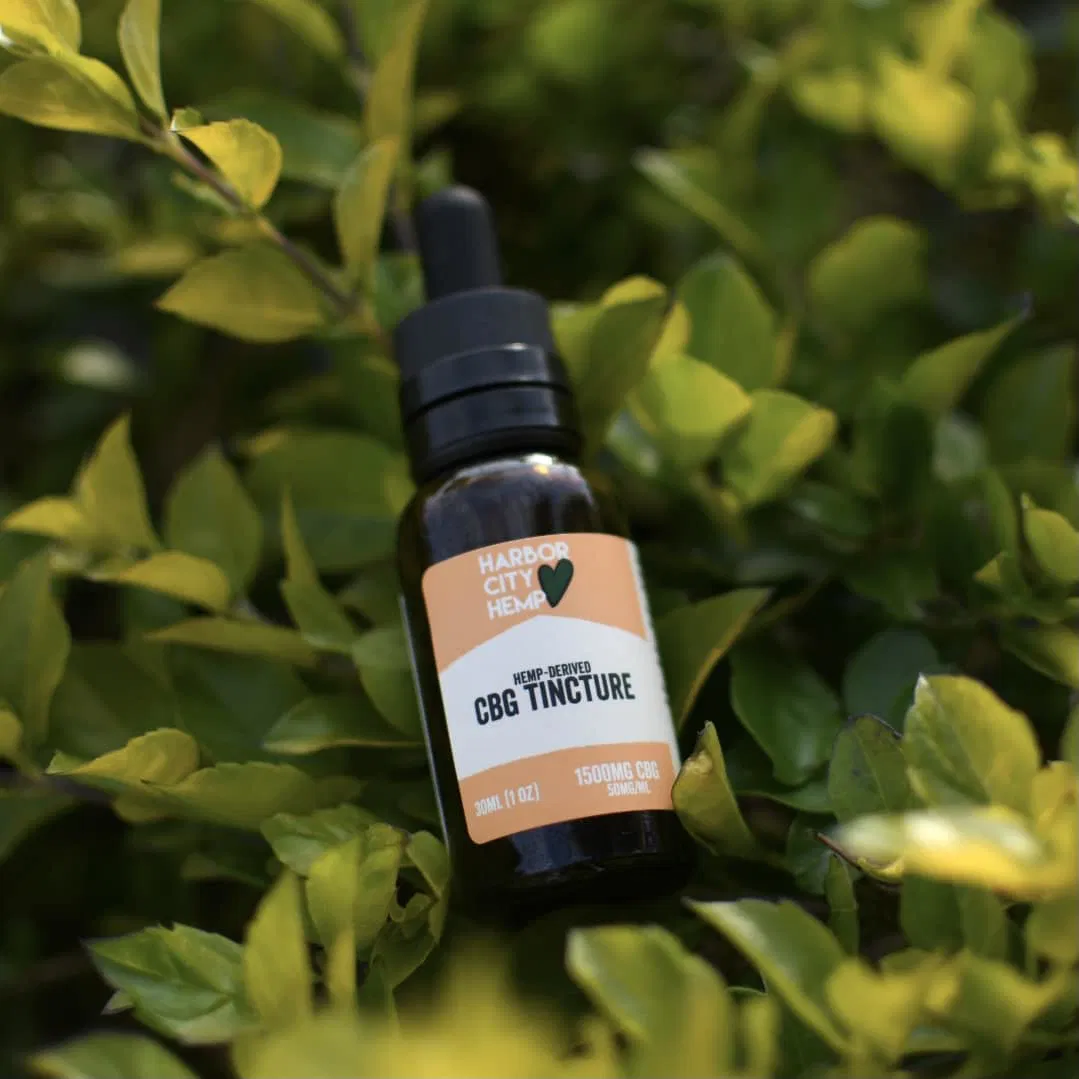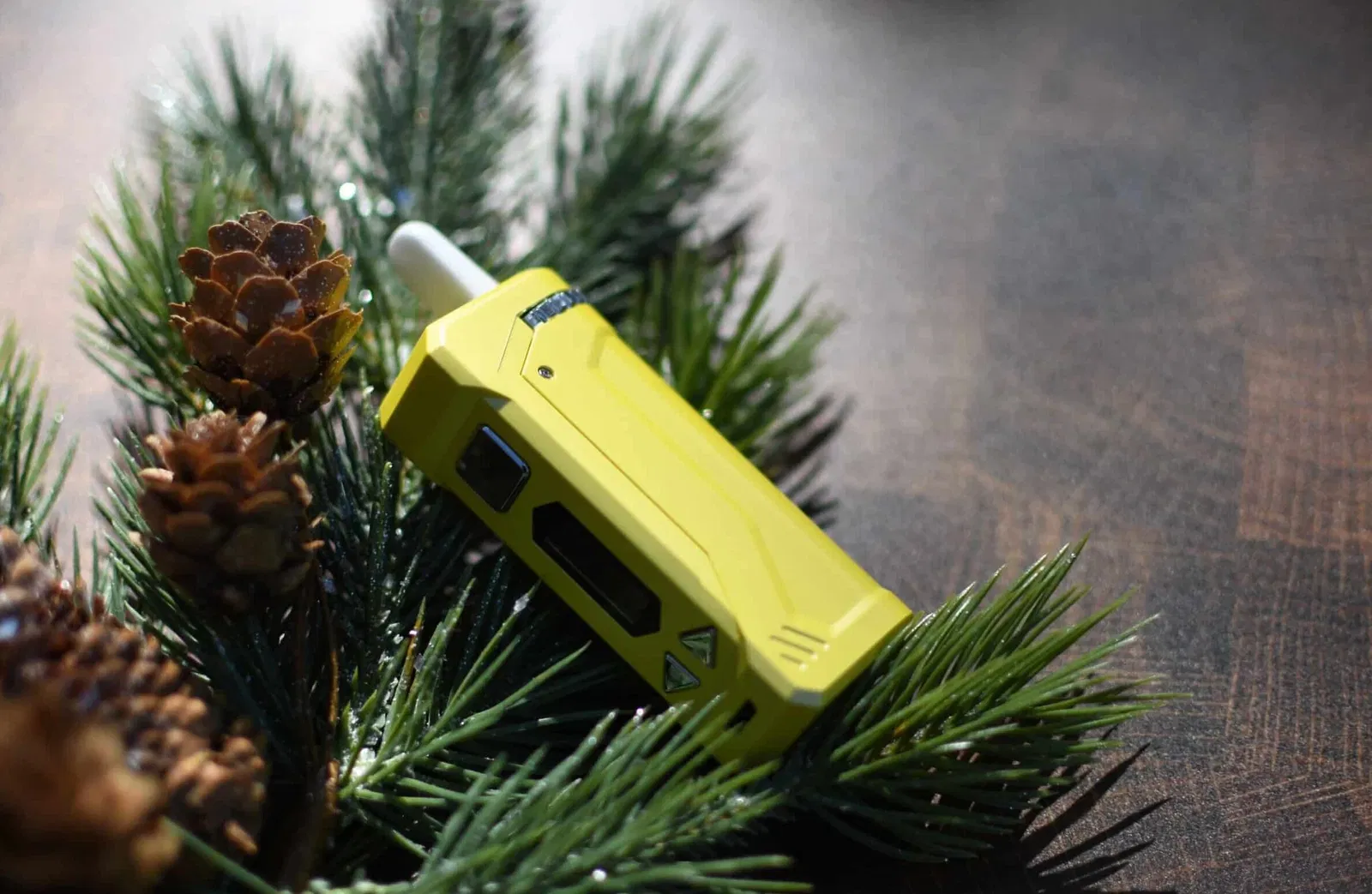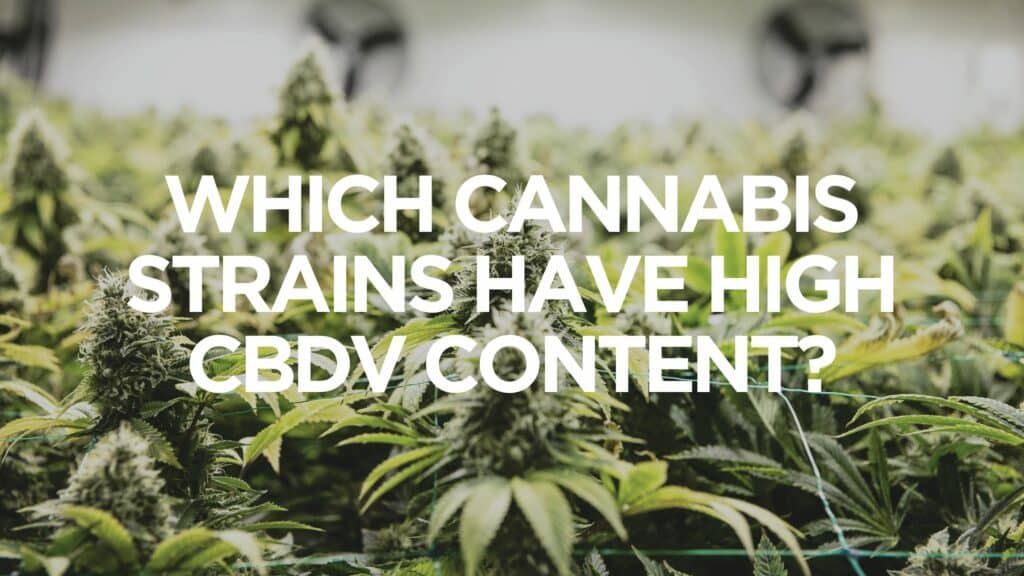THC and CBD are two of the most common substances in hemp plants. However, a lesser-known compound called cannabidivarin (CBVD) is slowly making its way onto the scene thanks to its therapeutic properties.
CBVD research is still in its early stages as cannabis laws pose a significant barrier to researchers conducting studies on the plant’s therapeutic properties. But we know enough to provide you with a list of the cannabis strains with the highest CBDV.
Join us as we discuss CBDV in more detail and highlight its various strains.
The Difference Between CBDV And CBD
Because their chemical structures are similar, CBDV and CBD can have similar effects and advantages. Because CBD and CBDV are both common cannabinoids, their research is also intertwined.
Both substances are present in cannabis plants and are being investigated in clinical settings for potential medical applications. In addition, these two have been isolated out of the 400 additional organic compounds found in marijuana.
Compared to CBDV, CBD was first discovered and has been studied more extensively. Researchers have found that CBD helps treat or manage the following conditions.
- Chronic pain
- Neuropathic pain
- Parkinson’s
- Inflammation
- Cancer symptoms
- Obsessive-compulsive disorder (OCD)
- Lupus
- Depression
- Diabetes
- Anxiety
- Psychosis
Meanwhile, studies on CBDV cannabinoids are still in their early stages and have only recently been published. Nevertheless, CBDV has primarily been studied and found to be effective in treating epilepsy and seizures in humans.
A major pharmaceutical company also supports the investigation of CBDV as an epilepsy treatment. For this investigation, they have also proposed clinical trials. Studies also covered potential treatments for nausea, Duchenne muscular dystrophy, and Rett syndrome.
How Does CBDV Work?
Cannabis connoisseurs still have much to learn about CBDV and its workings, just like with many other cannabinoids. Nevertheless, we have a general idea of how this cannabinoid might function in the human body based on early studies.
Cannabinoid receptors CB1 and CB2 have a low affinity for CBDV, like its cannabinoid cousin (CBN). This is one of the primary reasons it doesn’t have the intoxicating effects usually associated with cannabis.
Several studies have shown that cannabidivarin may indirectly interact with the human endocannabinoid system. For example, according to the ongoing research, CBDV can interact with TRPA1 and TRPV2 receptors.
Clinical trials examining the effectiveness of CBDV in treating convulsions and epilepsy symptoms, for instance, indicate that CBDV both activates and desensitizes TRPV1 receptors, also known as capsaicin receptors, which are essential for our ability to feel pain and perceive temperature.
These receptors are all transient receptor potential channels. According to research, These channels are built into the cell membrane and, when opened, let ions (like sodium, for instance) enter a cell.
Additionally, studies indicate that CBDV may hinder the activity of diacylglycerol lipase, a crucial enzyme in the production of 2-AG, an endocannabinoid made by the body naturally. CBDV does this, but it’s not entirely clear how.
CBDV Dosage: Choose It Well According to the Desired Effects
Depending on your desired effects, a larger or lower dose of CBDV may be necessary. For example, a higher dose is usually required when relieving chronic pain because lower doses are suitable for relaxation or sleep aid.
It’s important to remember that the ratio, not the percentage, ultimately determines the dosage. Small amounts of a concentrated product or a larger amount of a less concentrated product can achieve the same effect.
Which Cannabis Strains Have High CBDV Content?
“Landrace” Indica cannabis strains from Africa and Asia are excellent sources to seek high CBDV amounts. Generally, a landrace plant is one that was not crossbred with another plant.
Additionally, these Indica landrace cannabis strains are known for withstanding arid environments. On the other hand, these stains have not been tested.
The following CBDV strains have been identified as having high levels of CBDV.
Royal CBDV
As the name implies, Royal CBDV is one of the few CBDV strains with such a high CBDV content. From seed to harvest, these flowers bloom for 8 to 9 weeks. This particular strain has a low level of CBD content—5%. You can cultivate Royal CBDV indoors or outdoors as it expands to a minimum of 70 to 80 cm.
CBDV Auto
There is a soft earthy flavor to CBDV Auto, and its resin coating is shiny. This CBDV strain typically grows to a height of 60 to 90 cm and includes 5% CBDV and 4% CBD. If cultivated outdoors, it can reach a height of 150 cm.
Euphoria
The name Euphoria for this cannabis kind is not arbitrary at all. You can get incredible exhilaration from smoking marijuana by ingesting this CBDV strain. There is no doubt that the balance between THC and CBD contributes significantly to its pleasant, inexhaustibly euphoric effects.
Painkiller XL
Painkiller XL is well-known for having a nearly equal percentage of THC and CBD at 9%. While CBD receives most of the credit for marijuana’s numerous, scientifically-proven medical advantages, THC is the chemical most often blamed for getting people high.
This CBDV strain is produced from seeds that are 75% Sativa and 25% Indica. There is enough CBDV in Painkiller XL to help you unwind and enjoy the citrusy taste without feeling pain.
Royal Medic
One of the best cannabis strains with high CBDV content to enjoy a clear-headed high is the Royal Medic CBDV strain.
Sativa-dominant cannabis strains are often known for their high concentrations of THC and CBD. This strain, which contains 10% THC and 12% CBD, is popular among medical marijuana users since it offers both THC and CBD’s therapeutic effects.
Dance World
The Dance world has 11 percent CBD and was developed in Spain by Royal Queen Seeds. The effects of the Dance World are said to be exhilarating and uplifting, keeping the users positive and productive and filling them with joy and cheerful tones.
Forbidden V CBDV
Forbidden V is a CBDV strain that bursts with delicious and fresh flavors. The buds are longer and thinner than those of the typical CBD strain.
A 1:1 CBD to CBDV ratio indicates that Forbidden V’s CBD content may appear low initially. As a result of the tropical flavors and the balanced terpene profile of Forbidden V, this strain is excellent for cannabis users who want to relax yet remain fully conscious and creative at the same time.
Pine Walker CBDV
There is no hemp variety on the market with a higher varin content than Pine Walker. Pine Walker is super high in cannabidivarin genetic offspring of the famous Special Sauce strain.
Pine Walker has a flavor that combines pine needles with lemons. Expect a heaviness in your body because Indica effects dominate this CBDV strain.
CBDV’s Possible Medical Effects – What Research Says
Most of the physiological effects of substances like THC are modulated by their interactions with the CB1 and CB2 receptors. However, cannabinoids with anticonvulsant properties, like CBDV, utilize methods independent of either receptor.
The effects of CBDV on the capsaicin receptor, TRPV1, could influence its anti-epileptic effects.
CBDV has demonstrated the capacity to activate and block the TRPA1, TRPV1, and TRPV2 channels in a dose-dependent manner. As a result, neuronal hyperexcitability is reduced. This lessens epileptic activity and the accompanying convulsions.
Big Pharma Is Researching the Properties of CBDV
In recent years, CBDV has drawn a lot of interest. GW Pharmaceuticals, a major player in the pharmaceutical industry, declared that it has begun creating GWP42006 as an experimental substance.
To cure epileptic seizures, GW submitted its product for clinical testing. Unfortunately, a Phase 2a placebo-controlled study for focal seizures did not achieve its primary goals, according to their 2018 announcement.
However, the company declared that it would keep researching how cannabinoids can be used to treat epilepsy. Additionally, it expanded research to look into its potential application in conditions like fragile X syndrome, Rett syndrome, and other disorders.
Interestingly, the European Medicines Agency granted CBDV an “orphan designation” for treatment in Rett syndrome in 2017.
In case you were wondering, medications with the “orphan” designation have the potential to treat rare disorders. In Europe, a medicinal treatment can only be classified as such if it addresses a condition affecting one in every 2,000 individuals.
In 2020, the FDA granted CBDV orphan classification for the fragile X and Rett disorders, following the European Medicines Agency’s lead. Sanobiotec is now testing the cannabinoid’s potential for helping ASD.
It’s a part of an interventional Phase II study involving autistic children.
CBDV cannabinoid for Duchenne Muscular Dystrophy (DMD) & Rett Syndrome
Duchenne muscular dystrophy (DMD) causes irreversible muscle loss and chronic inflammation. In May 2019, British Journal of Pharmacology published a study that examined the effects of non-euphoric cannabinoids from marijuana on dystrophic mice’s muscle strength and performance.
The researchers discovered that CBDV could reduce inflammation and improve muscular function. The researchers hypothesized that cannabis could be a unique treatment for DMD because it increased movement.
In another article published in July 2019 in the Journal of Psychopharmacology, researchers found that CBDV effectively reduces memory deficits in animals with the same Rett Syndrome gene mutation that affects humans.
CBDV Cannabinoid as an Anticonvulsant
There is a close link between intractable childhood epilepsy and autism spectrum disorder (ASD). A study led by Hollande at the Albert Einstein College of Medicine in New York examined the effectiveness of CBDV in treating ASD-related problems. These include difficulty with social interaction and communication and persistent behavioral problems.
They found that this substance essentially increased delay to the first symptom of seizure and reduced PTZ-induced seizure activity.
In another study, they examined CBD and CBDV effects on rats with produced epileptic symptoms. ACS Chemical Neuroscience published the study in November 2014.
The research team found that both cannabinoids interacted with TRPV1. This channel is in charge of monitoring and controlling our body’s temperature and creating pain sensations.
There is hope for people with ASD, says a recent study published in 2019. Again, researchers found that CBDV therapy could lessen symptoms mimicking autism. Once again, mice were used as test subjects.
CBDV Cannabinoid and Nausea
It’s common for people who suffer from nausea or vomiting to turn to cannabis. Therefore, more research has been conducted to determine how cannabis may interact with our body’s natural nausea response.
The researchers examined the antiemetic effect of CBDV on animals in a comparative study published in 2013 in the British Journal of Pharmacology. First, they gave rats a nausea-inducing cocktail.
The researchers then conducted two separate tests to determine whether CBDV and THCV induce or alleviate nausea. CBDV and THCV didn’t appear to affect CB1 receptors, but they seemed to reduce symptoms of nausea.
How to Use Cannabinodivarin – CBVD Side Effects & Safety
Just like CBN, CBDV is a non-psychoactive cannabinoid with a remarkably safe profile and only a few mild side effects. This is in contrast to THC, D8 THC, and THC-O, which are all psychoactive cannabinoids.
In GW Pharmaceuticals’ clinical trials, CBDV was found to be well tolerated even at high doses and showed no symptoms of toxicity or safety problems. This study had no withdrawals, adverse effects, or substantial side effects either.
The full spectrum of CBDV properties is still unknown, so anyone considering using this substance should be cautious due to the lack of current research.
How to Use CBDV Cannabinoid
CBDV is a naturally occurring phytocannabinoid, which means that cannabis enthusiasts who choose raw goods have probably come across it in the past. CBDV could even be found in plant products like oils and distillates.
But because CBDV is not currently available on prescription, there are no clear therapeutic instructions for its use.
Suppose you decided to go with plant-based products with a greater concentration of CBDV.
In that case, you should remember that this substance’s bioavailability is relatively low when taken by mouth. This indicates that CBDV would have reduced effects when consumed orally. In this regard, CBD and CBDV are also very similar.
Conclusion
Thanks for reading! We hope this blog gave you a new perspective on CBDV, its properties, and potential benefits. Don’t forget to ask for your doctor’s advice before adding any cannabinoid to your daily routine.
Last but not least, make sure your supplier is worth your trust and money. One of our goals is to supply the local community and customers across the country with high-quality and affordable hemp products.
Give yourself a breather and enjoy some well-deserved peace and quiet with our products. If you’re interested in testing out cannabis products, look into Harbor City Hemp Delta 8 products and Harbor City Hemp CBD Tinctures.
CBDV Strains – High CBN Strains FAQ
What strain of cannabis has the most CBD in it?
Because each strain was grown under different conditions, it’s impossible to say which strain has the greatest CBD content. However, on average, these five strains tend to have the highest CBD content: Valentine X, ACDC, Harlequin, Charlotte’s Web, and Stephen Hawking Kush.u003cbru003eu003cbru003eHere are a few of u003ca href=u0022https://harborcityhemp.com/product-category/cbd-products/u0022u003eu003cstrongu003eHarbor City Hemp CBD Productsu003c/strongu003eu003c/au003e you might want to consider if you are interested in CBD.
What percentage of CBD is in cannabis?
Depending on the cultivar, the plant’s CBD content varies greatly. For example, there are cannabis Sativa strains with 1% CBD and others with 20%. Legal CBD cannabis average is below 10%, with more variations between 10 and 15%. The most potent plants on the modern cannabis market have just over 20% CBD.u003cbru003eu003cbru003eAdditionally, CBD and other cannabinoids are not distributed equally throughout the plant. For example, CBD is mainly concentrated in trichomes, sticky vesicles on cannabis flowers, and contains more CBD than stems, leaves, and seeds.
What is the highest CBD hemp?
u003cstrongu003eCreme De La Cremeu003c/strongu003e is grown inside the soil and contains 18.3% cannabinoids. This strain has juicy diesel and cheese smells and powerful Indica effects.u003cbru003eu003cbru003eu003cstrongu003eSuper Suver Hazeu003c/strongu003e is a CBD strain that stoners love. It’s a 50/50 hybrid that calms without sedating. The dank scent enhances the flavor of sweet and sour fruit, and the bright green, orange-haired buds are so trichome-covered you’d think they came from the moon.u003cbru003eu003cbru003eu003cstrongu003ePapaya Nightsu003c/strongu003e is a cheerful Sativa. The flavor profile combines fresh stone fruit aromas with earthy tones. Dense trichomes cover vivid green buds with orange hairs. 19.7% CBD, 21.5% total cannabinoids.u003cbru003eu003cbru003eu003cstrongu003eCitronu003c/strongu003e is au003cstrongu003e u003c/strongu003ecitrus-flavored Sativa strain perfect for morning comfort without sedation. Energy spike with daydreaming, but no grogginess or crash afterward. These vibrant green buds with orange hairs contain 18.5 percent CBD.u003cbru003eu003cbru003eu003cstrongu003eApple Pie: u003c/strongu003eApple Pieu003cstrongu003e u003c/strongu003eblends sweet and savory citrus and terpenes. Apple Pie has 14.4% THC and 13% CBDA. It’s a top-notch indoor strain produced in the soil.
What is the strongest Delta 8 flower?
The following products have the highest delta-8 THC content you can purchase online legally:u003cbru003eu003cbru003eu003cstrongu003eSour Space Candyu003cbru003eSour Dieselu003cbru003eLifteru003cbru003eHawaiian Hazeu003cbru003eOG Kushu003cbru003eSkywalker OGu003cbru003eNorthern Lightsu003c/strongu003e




